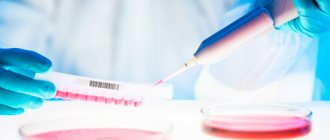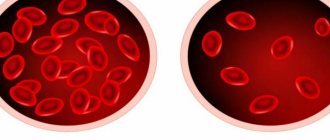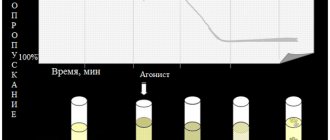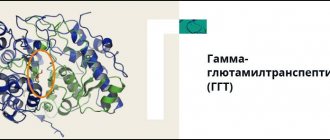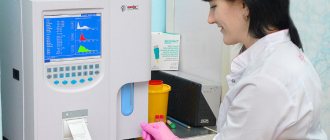Basophils are most often considered only as defenders against parasitic infections. However, scientists believe that their role in the body is much broader. Basophils play a role in allergic reactions, inflammation and autoimmune diseases. Read on to find out more about them.
The article is based on the findings of 63 scientific studies
The article quotes authors such as:
- Department of Microbiology, Perelman School of Medicine, University of Pennsylvania, USA
- Institut National de la Santé et de la Recherche Médicale, France
- National Institute of Allergy and Infectious Diseases, USA
Please note that the letters in brackets (1, 2, 3, etc.) are clickable links to peer-reviewed scientific studies. You can follow these links and read the original source of information for the article.
What are basophils?
Basophils are a type of circulating white blood cell in the bone marrow that are part of the white blood cells. Basophils circulate in the blood and can be recruited to peripheral tissues at sites of inflammatory foci. They protect the body and help it get rid of bacteria and parasites. Abnormal basophil levels are most often associated with allergies, asthma, and autoimmune diseases. (, )
Appearance of basophil
Basophils are the only circulating leukocytes that contain histamine , and they have much in common with their tissue resident counterparts, mast cells . Like mast cells, basophils are activated by antigen cross-linking of the Fc eRI -linked IgE receptor to undergo rapid degranulation and release their cellular contents.
Functions of basophils
The innate immune system (innate immunity) contains a set of mechanisms that allow the body to protect itself from harmful biomaterials (microorganisms, toxins, malignant cells, cells affected by viruses).
Basophils are part of the innate immune system because they can quickly respond to foreign organisms and substances. They are activated when they come into contact with foreign molecules, IgE immunoglobulin, or certain specific signals from other cells. (, , )
Classic pathophysiological process of allergic inflammation.
MS is a mast cell, the activation of which is supported by basophils .
(source) Most of the functions of basophils are associated with the release of heparin and histamine at the site of inflammation where they arrive. Basophils store heparin and histamine in special structures called granules. When these cells are activated, they release their granules. ()
Histamine dilates blood vessels and increases blood flow. Heparin is a well-known anticoagulant (reduces blood clotting). It also helps maintain proper blood flow. This allows all the necessary cells and substances to enter the site of inflammation from the bloodstream. (, )
Activated basophils are also a source of the cytokines IL-3 and IL-4. Scientists suspect that these molecules enhance the activity of both basophils themselves and other immune cells, potentially shifting the Th1/Th2 toward Th2 cells. (, , )
Basophils and mast cells have been implicated in the pathogenesis of allergic conditions because high levels of mediators common to both cell types are found in tissues implicated in allergic diseases. Basophils are also a source of the major Th2-driving cytokine , IL-4 , in the early stages of immune responses. Basophils are rapidly recruited to the skin, lungs, or nose following antigen challenge in humans, and are found in increased numbers in asthma, allergic rhinitis, atopic dermatitis, and nasal polyps. Thus, basophils may play a pathological role in both the onset and chronicity of allergic disease. ()
Normal basophil level
Laboratory test results are usually displayed as a set of values known as the “reference range,” which is sometimes called the “normal range.” The reference range includes the upper and lower limits of a laboratory test based on a large group of healthy people.
Basophils are the least numerous leukocytes. Their quantity is usually 0 – 0.20 x 10^9/l
(about 0.5% of the total number of leukocytes). ()
Remember that some interlaboratory variability occurs due to differences in equipment, methods, and chemicals used. Don't panic if your result is slightly out of range—as long as it's within the normal range based on the lab that did the testing, you should be considered normal.
However, it is important to remember that a routine test does not mean that a specific disease is absent. Your doctor will interpret your results in combination with your medical history and other test results.
Role and functions of cells
h21,0,0,0,0–>
Basophils are produced in the bone marrow, after maturation they enter the systemic circulation and after a few hours migrate to peripheral tissues, where they perform a testing and protective function. They recognize foreign protein substances, inactivate them or attract other protective bodies to the entrance gate. Basophils react to food and drug allergens, toxic compounds, toxins of insects, animals, parasites, and plants.
p, blockquote4,0,0,0,0–>
They differ from other granulocytes in their large size, S-shaped nucleus, multiple granules in the cytoplasm, and ability to transport immunoglobulins. Biologically active substances responsible for allergic and inflammatory reactions are concentrated inside basophils:
p, blockquote5,0,0,0,0–>
- interleukins;
- leukotrienes;
- prostaglandins;
- serotonin.
In the highest concentrations they contain two antagonistic (opposite in action) substances - histamine and heparin. The first triggers an inflammatory reaction, increases vascular permeability, and activates blood clotting. The second normalizes smooth muscle tone, prevents thrombus formation, and reduces membrane permeability.
p, blockquote6,0,0,0,0–>
Basophils are prone to chemotaxis - movement towards inflammatory foci, phagocytosis - they can absorb small particles, degranulation - instant release of the contents of granules upon contact with allergens, autolysis - self-destruction after performing their functions. Under their control:
p, blockquote7,0,0,0,0–>
- Basophils are elevated in an adult
- allergic reactions (including immediate type);
- blood clotting in small capillaries;
- mobilization of other leukocytes against pathogens, including parasites;
- starting the growth of new capillaries;
- accumulation and removal of bioactive substances from tissues (elimination of the consequences of allergies).
Basophils are similar to other proallergic cells - mast cells (mast cells). They are even produced from the same antecedent structures. Previously it was believed that mast cells are fully mature basophils. Later it was proven that the bodies are different, and basophils leave the bone marrow already functionally active, while mast cells are finally formed in the connective tissue.
p, blockquote8,0,0,0,0–>
p, blockquote9,0,1,0,0–>
Basophil activation assay
The basophil activation test is a blood test that evaluates the degree of basophil activation caused by an allergen. Doctors can use it to diagnose allergies to various substances, such as foods, medications or dust particles, pollen. ()
The interaction
of basophils and mast cells during an allergic reaction and the substances they secrete.
(source) During the test, a specific allergen is added to whole blood, where it can activate basophils. Activated basophils have specific molecules on their membrane (CD63 or CD203c) that help recognize them. However, there are some medications (such as omalizumab) that can interfere with the results of these tests. Therefore, you should warn in advance that you are taking such medications. (, , , )
How to reduce the number of basophils
As we said above, basophilia is not an independent disease, but can only be considered as a marker of a pathological process, indicating certain changes in the body, so it is not worth fighting this symptom. However, this sign cannot be ignored and additional examination is necessary to identify the causes that led to this condition and act on them.
If the cause of basophilia was anemia, iron supplements, vitamins B12 and folic acid are prescribed. Antihistamines are used to treat allergies. If physiological basophilia occurs, correction is usually not required.
After a correct diagnosis and adequate therapy, when the cause of the pathological process is eliminated, the blood test returns to normal.
Return to articles
Increased level of basophils
Increased level of basophils
(
above 0.20 x 109/l
) is called
basophilia
. With a high degree of probability, such an increase is associated with the development of autoimmune inflammation or allergies. ()
Additionally, in one study of 47 patients with chronic myeloid leukemia, high basophil levels were associated with worse survival prognosis. ()
Causes of elevated basophil levels
Underactive thyroid gland
High levels of basophils may occur in people with hypothyroidism (underactive thyroid). ()
Myeloproliferative disorders in the bone marrow
Myeloproliferative disorders cause the bone marrow to produce too many white blood cells, red blood cells, or platelets. In rare cases, such changes can progress to leukemia.
Leukemia is a type of bone marrow cancer. This disease results in large numbers of abnormal white blood cells in the blood, including basophils. Basophilia is an important marker of leukemia. (, , )
Allergic reactions
Allergies are most often associated with inflammation, which is caused by activated basophils. When interacting with an allergen, basophils are activated, release their granules and contribute to the manifestation of allergy symptoms. ()
Inflammatory diseases
Ulcerative colitis and Crohn's disease
Ulcerative colitis and Crohn's disease are different inflammatory bowel diseases, but they share some common features.
While ulcerative colitis is allergic in nature, Crohn's disease is an autoimmune disease. However, both are associated with inflammation, which increases the number of basophils. ()
Rheumatoid arthritis
Rheumatoid arthritis is an autoimmune disease that causes inflammation of the joints. Juvenile rheumatoid arthritis is usually associated with increased levels of circulating basophils. However, adults with rheumatoid arthritis may have decreased levels of basophils. (, )
Asthma
Asthma is a serious inflammatory and allergic disease. It begins with the body's increased reactivity to common inhalant allergens. This disease is known for its “flares,” which lead to shortness of breath and coughing. ()
are thought to play a large role in the development of asthma , but their levels in the blood are usually within the normal range.
The inflammation of the lungs that causes asthma is associated with the secretion of interleukin-4 (IL-4) from immune cells called
basophils .
(source) It is important to note that patients with allergic asthma are sensitive to basophil levels, and studies show that elevated basophils indicate an impending attack. (, )
Infections
Bacterial, viral and parasitic infections can increase the number of basophils, for example tuberculosis, influenza, smallpox. Parasites in the human body produce many substances that can provoke immunity. Basophils play a critical role in this type of immune response. They also help the body respond more quickly to similar infections in the future. (, , )
Functions of basophils
Basophils take an active part in immune reactions, in particular in the reaction of inflammation, allergy or anaphylaxis. When an allergen, toxin or antigen is detected, the basophil releases from its granules all biologically active substances that block the action of substances dangerous to the body and, in parallel, trigger a whole cascade of inflammatory reactions aimed at improving access of other immune cells to the pathological focus.
Thus, basophils, firstly, neutralize the spread of toxins throughout the body, and secondly, create conditions for the work of other immunocompetent cells (for example, lymphocytes).
Reduced basophil levels
Low levels of basophils are known as basopenia . Basopenia itself is not dangerous to your health, but it can be associated with certain medical conditions. (, , )
Basophils can penetrate from the blood into areas of inflammation. This migration reduces their circulating amount in the blood . (, )
When basophils release their granules, they are no longer active. These “empty” cells are not included in the basophil count during the analysis. (, )
When a low level of basophils is associated with their migration to areas of inflammation, this can serve as an additional argument for doctors when making a diagnosis. ()
Causes of reduced basophil levels
Overactive thyroid gland
Low basophil levels may occur in people with hyperthyroidism or being treated with thyroid hormones. ()
Hives
Hives are a type of skin rash with red and raised bumps called blisters. They are very itchy and itchy. This condition is usually caused by an infection or an allergic reaction. ()
Urticaria is caused by active molecules released by basophils and mast cells . Basophils migrate from the blood into urticaria blisters during disease activity, thereby causing basopenia (a decrease in the number of basophils circulating in the blood). (, , )
Lupus
Lupus (systemic lupus erythematosus) is an autoimmune disease in which the immune system attacks healthy tissue. It causes inflammation in various parts of the body (such as joints, skin, heart and brain). ()
The inflammatory process in lupus causes the accumulation of basophils in secondary lymphatic organs , such as the lymph nodes, tonsils and spleen, which leads to a decrease in the level of basophils in the blood. (, )
Schematic representation of exacerbation of systemic lupus erythematosus (SLE) by the production of basophil activation-dependent autoantibodies and interleukin IL-17. (source)
Taking corticosteroids
Corticosteroids reduce both the activity of basophils and their number. If you take corticosteroids, your basophil levels may be reduced. Talk to your doctor about possible problems you may have while receiving corticosteroids. (, )
Other diseases
Anxious depression
One study of 709 participants linked anxious depression to decreased levels of basophils in the blood. The authors showed a link between inflammation and depression, although no causal conclusions could be drawn. Other multidirectional studies are needed to obtain a more precise relationship. ()
Smoking
Smoking activates basophils and decreases the level of intact basophils. Therefore, smoking can theoretically lead to the development of basopenia. However, studies have produced mixed results. One study of 498 people found basophilia (an increase in basophils) in smokers. (, , )
In what diseases are basophils reduced?
h23,0,0,0,0–>
A deficiency of corpuscles is determined much less frequently than their excess (basophilia). The reasons for the increased number of basophils are allergic reactions, inflammatory processes, and cancer (see “Elevated basophils” for more details). Basopenia in adults can be accompanied by:
p, blockquote15,0,0,0,0–>
- acute immune responses to the invasion of toxins, infections, parasites, allergens, cell death, or directed against one’s own body;
- chronic exposure to stress;
- physical exhaustion (with long-term and severe illnesses, malnutrition, acute deficiency of vitamins and minerals);
- pathologies of the adrenal glands and thyroid gland;
- treatment with hormonal drugs;
- diseases of the nervous system.
The basophil count drops to a critical level (up to complete absence) with agranulocytosis. This condition is accompanied by a decrease in the number of all granulocyte bodies (segmented neutrophils and eosinophils also decrease).
p, blockquote16,0,0,0,0–>
Agranulocytosis may be of myelotoxic origin (due to damage or malignant degeneration of bone marrow cells). It is caused by radiation, treatment with cytostatics, and some antibiotics (from the penicillin group, Gentamicin, Rifampicin). Immune agranulocytosis can develop against the background of thyroiditis, malaria, polio, influenza, collagen diseases (systemic lupus erythematosus, rheumatoid arthritis, scleroderma).
p, blockquote17,0,0,0,0–>
During pregnancy
h31,0,0,0,0–>
In women, basophils may be absent in a blood test during pregnancy. Most often this is caused by anemia (B12- or B9-deficiency). A temporary decrease sometimes occurs during ovulation, however, this is an irregular phenomenon. In some cases, a slight increase in cell levels is noted. If the CBC shows a normal content of blood cells, except for basophils, one can suspect a natural decrease in their concentration against the background of an increase in the volume of circulating blood.
p, blockquote18,0,0,0,0–>
- Basophils in the blood are increased, decreased, the norm in women, adults, children by age
In children
h32,0,0,0,0–>
Basopenia in a child is most often caused by a past infection or severe allergy, which leads to a redistribution of cells in the body. It is also encountered by almost all small patients who undergo chemotherapy or radiation therapy. Since these methods inhibit cell division, a decrease in all groups of leukocytes is observed simultaneously.
Useful information: Urea is elevated in the blood: 14 reasons, symptoms, normal, treatment, how to reduce it in adults (men, women) and children, diet, medicationsp, blockquote19,1,0,0,0–>
p, blockquote20,0,0,0,0–>
Approximately 1 person in 100 thousand suffers from Cushing's syndrome. It has been proven that pathology occurs 5 times more often in women than in men. It is diagnosed from 20 to 45 years of age, but there are cases among children. Cushing's disease is caused by hyperplastic degeneration of the pituitary lobes and leads to excessive synthesis of adrenal hormones. The pathology is accompanied by manifestations of hypercortisolism. In childhood, they provoke retardation in mental and physical development, and subsequently lead to disruptions in the functioning of all organs and systems, and severe metabolic disorders.
p, blockquote21,0,0,0,0–>
Factors influencing basophil activity
You may try the additional steps listed below if you and your doctor decide they may be appropriate. None of these options should ever be used in place of what your doctor recommends or prescribes.
The following additional approaches are supported only by limited clinical research. There is not enough evidence to support their use in people with high basophil counts.
In a study of 44 patients, crocin
(20 mg) reduced the amount of basophil by almost 15%.
Although crocin is a compound from saffron , saffron itself is quite ineffective when used long-term. Large-scale clinical studies are needed. (, )
Saffron and its components protect the brain.
Saffron has a number of medicinal properties, such as antihypertensive, hypolipidemic, antitussive, antidepressant, anticonvulsant, anxiolytic, antioxidant, antitumor, antinociceptive and anti-inflammatory effects. (source) In a human study of 20 patients, Polygoni Cuspidatum extract had anti-inflammatory properties. In mice, it suppressed the SYK signaling pathway, present in both mast cells and basophils. This reduced the release of histamine and the production of allergic cytokines. (, )
Some studies on humans and animals have shown that tiny particles and various substances in polluted air increase the activity of basophils. (, , )
Chronic stress negatively affects the body in many ways. It increases levels of the hormones cortisol and norepinephrine, which has negative consequences for the immune system. Scientists believe that cortisol stimulates the Th2 type of immune cells, and that norepinephrine increases the activity of basophils . (, , , , )
Limited evidence suggests that exposure to antibiotics is associated with a higher risk of developing asthma. There is an assumption that this is due to incorrect reactions of basophils. However, this relationship may be indirect or inconsistent and remains unproven. (, , )
EVEN MORE USEFUL INFORMATION
Allergies - Survival Tips
Histamine: food and other stimuli to increase it
Norm
When taking blood for a general blood test, the determination of basophils, as is known, is included in the calculation of a certain leukocyte formula.
- Basophils are elevated in a child
Thus, the norm of basophils is indicated in the following indicators:
- Newborns - 0.75%
- Children aged 1 month - 0.5%
- One-year-old child - 0.6%
- Children aged 2 years - 0.7%
- Adults - from 0.5 to 1%
An increase in the number of basophil cells (when basophils are increased in the blood - more than 0.2 * 109 / l) is called basophilia. A decrease in the number of basophil cells in the peripheral blood (when it is low and the analysis shows less than 0.01*109/l) is called basopenia.

